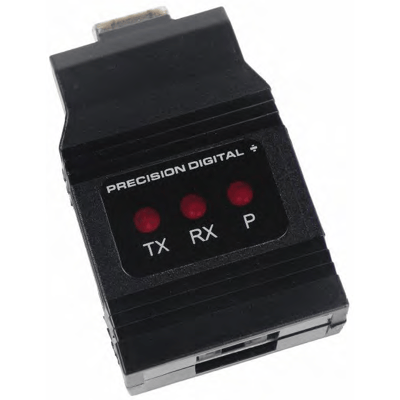Serial Communication Converter & Adapter
Brand: Precision Digital CorporationRS-232, RS-422, and RS-485 are standard interfaces approved by the Electronic Industries Alliance (EIA) for connecting serial devices.
In EIA terms, the device (e.g. meter) that connects to the interface is called a Data Communications Equipment (DCE) and the device to which it connects (e.g. the computer) is called a Data Terminal Equipment (DTE).
The RS-422 standard was designed to replace the older RS-232 standard because it supports higher data rates and greater immunity to electrical interference.
RS-485 is similar to RS-422 but can support multi-point connections per line because it uses lower-impedance drivers and receivers.
Line drivers and receivers are used to exchange data between two or more points (nodes) on a serial communications network.
Reliable data communications can be difficult in the presence of induced noise, ground level differences, and other hazards associated with installation of a network.
When communicating at high data rates, or over long distances in real world environments, RS-232 is often inadequate. The differential data transmission of RS-422 and RS-485 offers superior performance in most applications.
Differential signals can help if the effects of ground shifts and induced noise signals that can appear as common mode voltages on a network.
RS-422 was designed for greater distances and higher baud rates than RS-232.
In its simplest form, a pair of converters from RS-232 to RS-422 (and back again) can be used to form an "RS-232 extension cord". Data rates of up to 100 kbits/second and distances of 3,937' (1,200 m) can be accommodated with RS-422.

